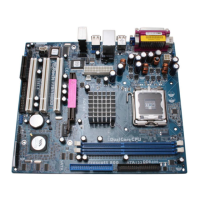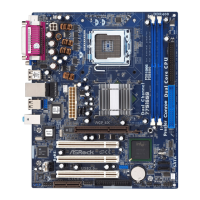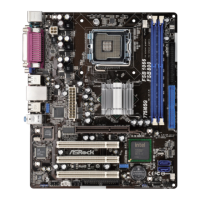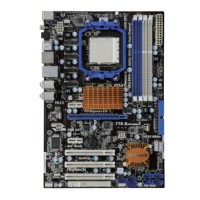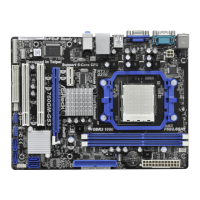
Do you have a question about the ASROCK 775Dual-VSTA and is the answer not in the manual?
| Number of memory slots | 2 |
|---|---|
| Maximum internal memory | 2 GB |
| Processor socket | LGA 775 (Socket T) |
| Processor manufacturer | Intel |
| S/PDIF out connector | Yes |
| USB 2.0 ports quantity | 4 |
| Parallel ports quantity | 1 |
| Motherboard form factor | ATX |
| Compatible operating systems | Microsoft Windows 2000 / XP / XP 64-bit / Vista |
| Bundled software | Drivers, Utilities, AntiVirus Software (Trial Version) |
| Networking features | 10/100 Ethernet |
| BIOS memory size | 32 Mbit |
| RAID levels | 0, 1 |
| Depth | 244 mm |
|---|---|
| Width | 305 mm |
Lists all items included in the motherboard package.
Details the technical specifications of the motherboard.
Specifies minimum hardware requirements for Windows Vista.
Lists compatible PCI Express VGA cards for the graphics slot.
Diagram showing the placement of motherboard components and connectors.
Details the rear panel connections and audio output configurations.
Instructions on securing the motherboard to the chassis using screws.
Important safety and handling precautions before installing components.
Step-by-step guide for installing the Intel 775-LAND CPU into the socket.
Procedure for installing the CPU cooling fan and heatsink.
Instructions for installing DDR and DDRII memory modules for dual channel.
Information on PCI, AGP, and PCI Express slots for expansion cards.
Details on enabling the Surround Display feature using multiple graphics cards.
Explains the function and setup of various jumpers on the motherboard.
Describes FDD, IDE, and SATA connectors and their pinouts.
Details SATA power, USB, Infrared, Audio, and Front Panel Audio headers.
Describes system panel, speaker, chassis fan, and CPU fan connectors.
Details Game, ATX Power, and ATX 12V power connectors.
Guide for connecting HDMI audio output via SPDIF header.
Step-by-step guide for installing SATA hard disks.
Explains Hot Plug and Hot Swap features for SATA HDDs.
Steps for installing OS on SATA HDDs with RAID.
Steps for installing OS without RAID or on IDE HDDs.
Explanation of the Untied Overclocking Technology feature.
Overview of the BIOS Setup Utility and how to enter it.
Describes the main menu options available in the BIOS.
Explains the function of various keys for BIOS navigation.
Displays system overview and basic configuration settings.
Access to advanced system configuration settings.
Settings for CPU frequency, thermal throttling, and other CPU features.
Configuration options for DRAM, AGP, PCI, and V-Link.
Settings for power management and system sleep states.
Settings for SATA and IDE devices, including operation mode.
PCI/PnP settings, including latency timer and bus mastering.
Configuration options for the floppy drive.
Settings for onboard serial, infrared, parallel, and game ports.
Settings for USB controller, USB 2.0, and legacy USB support.
Monitors system hardware status like temperature and fan speed.
Configures boot device priority and settings.
Advanced boot options like network boot and NUM-Lock state.
Manages system passwords for supervisor and user.
Options for saving, discarding changes, and loading defaults.
Information on supported Windows OS versions for installation.
Details on the contents of the support CD, including drivers and utilities.
Instructions on how to launch the support CD's main menu.
Describes the drivers available on the support CD.
Describes the utilities available on the support CD.
Information about a live demo program for CPU installation.
Provides contact details and website for ASRock support.
